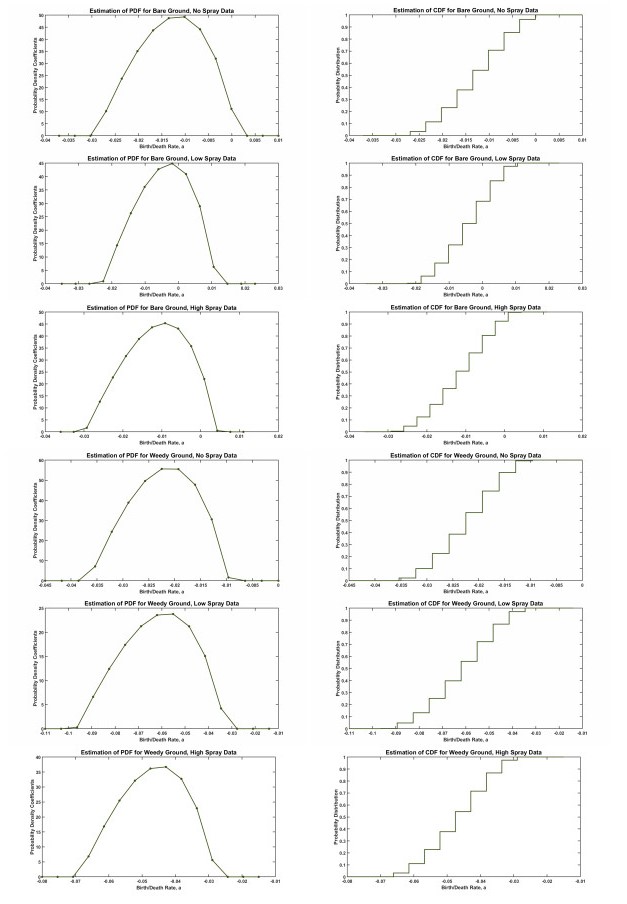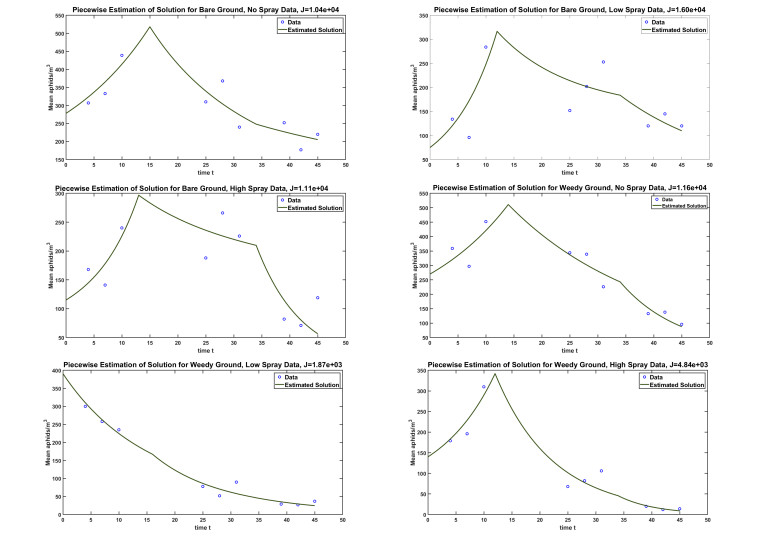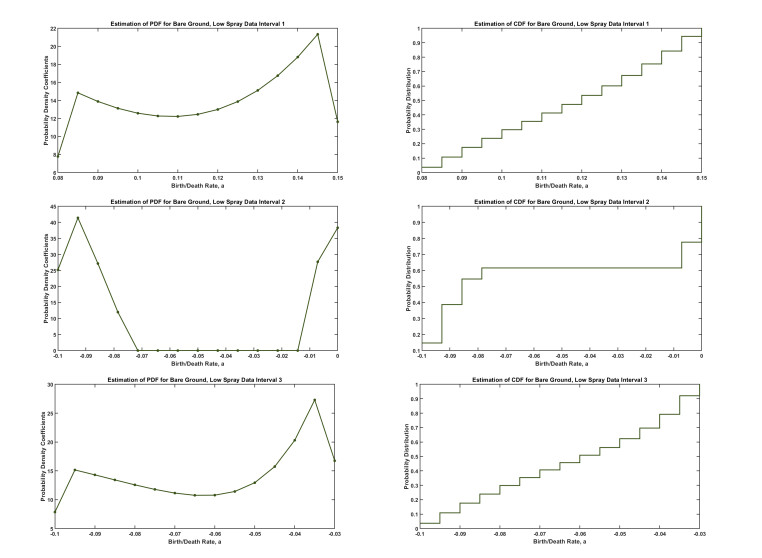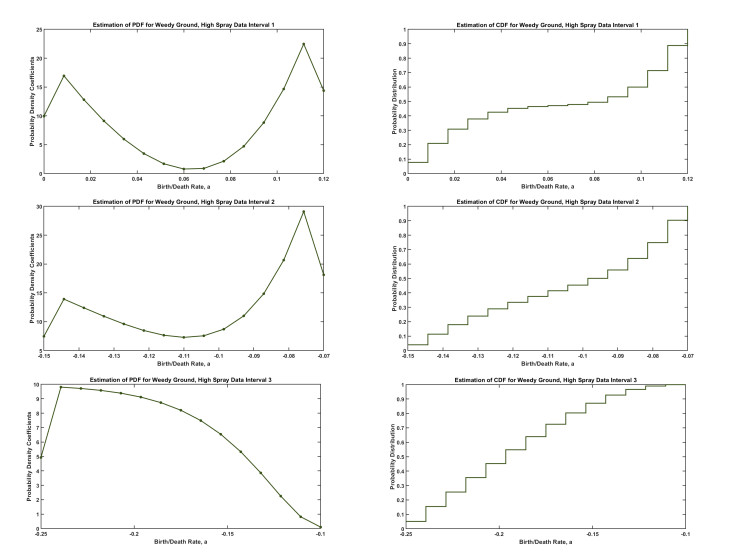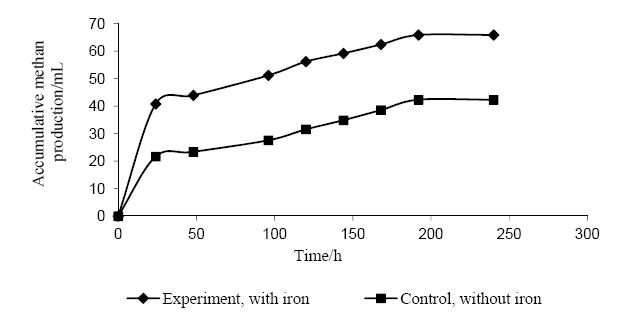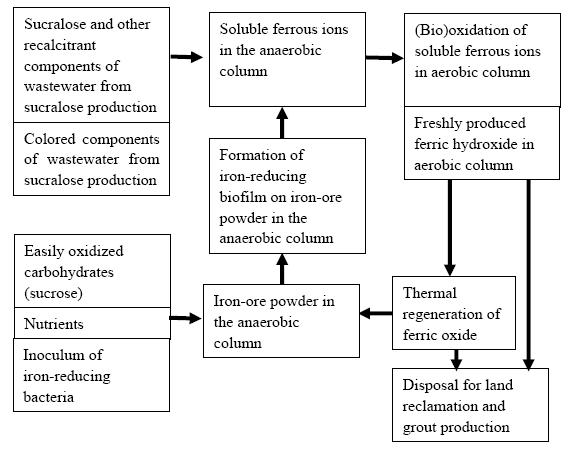Bioreduction of Fe(III) and biooxidation of Fe(II) can be used in wastewater engineering as an innovative biotechnology BioIronTech, which is protected for commercial applications by US patent 7393452 and Singapore patent 106658 "Compositions and methods for the treatment of wastewater and other waste". The BioIronTech process comprises the following steps: 1) anoxic bacterial reduction of Fe(III), for example in iron ore powder; 2) surface renovation of iron ore particles due to the formation of dissolved Fe2+ ions; 3) precipitation of insoluble ferrous salts of inorganic anions (phosphate) or organic anions (phenols and organic acids); 4) (bio)oxidation of ferrous compunds with the formation of negatively, positively, or neutrally charged ferric hydroxides, which are good adsorbents of many pollutants; 5) disposal or thermal regeration of ferric (hydr)oxide. Different organic substances can be used as electron donors in bioreduction of Fe(III). Ferrous ions and fresh ferrous or ferric hydroxides that are produced after iron bioreduction and (bio)oxidation adsorb and precipitate diferent negatively charged molecules, for example chlorinated compounds of sucralose production wastewater or other halogenated organics, as well as phenols, organic acids, phosphate, and sulphide. Reject water (return liquor) from the stage of sewage sludge dewatering on municipal wastewater treatment plants represents from 10 to 50% of phosphorus load when being recycled to the aeration tank. BioIronTech process can remove/recover more than 90% of phosphorous from this reject water thus replacing the conventional process of phosphate precipitation by ferric/ferrous salts, which are 20-100 times more expensive than iron ore, which is used in BioIronTech process. BioIronTech process can remarkably improve the aerobic and anaerobic treatments of municipal and industrial wastewaters, especially anaerobic digestion of lipid- and sulphate-containing food-processing wastewater. It can also remove the recalcitrant compounds from industrial wastewater, enhance sustainability and quality of water resources, restore eutrophicated lakes due to removal of phosphate, ammonium, and pesticides from water, and recover ammonium and phosphate from municipal and food-processing wastes.
1.
Introduction
In the summer of 1999, Banks and Stark [2] conducted a full-factorial design field experiment to explore the potentially combined effects of vegetation diversity and selective pesticide disturbance on aphid populations in a broccoli agroecosystem. They applied three concentration levels of the biorational pesticide imidacloprid to broccoli patches surrounded by either bare ground or weedy vegetation. These efforts by necessity resulted in what is now referred to as agammaegate data [3,Chapter 14], [4,Chapter 5] wherein possibly (almost certainly) different subpopulations are counted in a longitudinal manner over the life of the experiment.
In earlier efforts [1], authors sought to fit several autonomous ordinary differential equation (ODE) models to each of the six data sets (two margin types each with three pesticide spray levels),
1. Bare margin, no spray;
2. Bare margin, low spray (15 g ai/ha);
3. Bare margin, high spray (30 g ai/ha);
4. Weedy margin, no spray;
5. Weedy margin, low spray (15 g ai/ha); and
6. Weedy margin, high spray (30 g ai/ha),
in an attempt to understand the influence of natural enemies or other margin-based factors on pest suppression separately from and in interaction with that of the insecticide. In these early attempts, the authors ignored the agammaegate aspects of the data and used ordinary least squares techniques to fit the models. In addition, motivated by both varying environmental factors and changes in dynamics due to pesticide application, the authors also investigated the same set of models with piecewise constant and piecewise linear time-varying coefficients in the corresponding non-autonomous ODEs. Parameterizing these time-varying coefficients introduced additional degrees of freedom, but in general the non-autonomous systems provided substantially better fits to the data. Specifically, chi-squared tests revealed that increasing degrees of freedom to move from constant to time-varying coefficients yielded statistically significant improvement in model fit. Details of the data sets, the methods used in data collection, and the model fit are given in [1,5,6,2] and summarized in a readily available technical report [7].
An obvious goal of that earlier paper was to contribute to the literature on plant–insect herbivore–pesticide interactions which would help raise questions for future investigations supported by experiments. Although this is still a secondary goal of this paper, our main objective in this paper is to discuss the similarities and differences between previous efforts in which data was simply treated as longitudinal data (i.e., the true agammaegate nature of the data was ignored) to current, more accurate efforts of treating the data correctly as agammaegate data. Therefore, in this paper, we correctly acknowledge the agammaegate nature of the data and apply the more recently developed methodology for treating such data sets in the context of the Prohorov Metric Framework (PMF) [3,4,8,9,10,11,12,13,14]. Hence, we present a combined mathematical/statistical modelling methodology that has broad applicability to other problems in biology as well as engineering and general sciences in which agammaegate data has been collected and must be treated accordingly. We compare the results of this methodology to the standard, although erroneous, treatment of agammaegate data as simply longitudinal data.
2.
Mathematical model
While the authors of [1] considered 7 different ordinary differential equation models of population dynamics, we focus on only one of these models to compare results when treating the data as truly agammaegate data versus ignoring the agammaegate nature of the data. This model was called Model 3 in the earlier reference [1]. The model involves a single state variable $ N(t) $, which denotes the aphid population density: (mean aphids)/$ \mbox{m}^3 $. The model has the general form
where $ \frac{dN}{dt} $ (equivalently $ \dot{N} $) denotes the time derivative of the state variable $ N(t) $; $ B $, a (potentially time- and/or state-dependent and/or random variable) birth rate; and $ D $, a (potentially time- and/or state-dependent and/or random variable) death rate.
The model used in our current study (omitting the implicit time dependence of $ N $ and $ \dot{N} $) assumes mortality due to pesticides and/or predation is the driving force behind aphid population dynamics and is the standard exponential model for population dynamics, allowing for simultaneous exponential birth and death. Here $ B > 0 $ and $ D > 0 $ in (MM) above for the deterministic time dependent coefficient models. In the case of random differential equation (RDE) models we take $ B-D = A $ for a random variable and we have an RDE model
Note that we let $ A = B - D $ denote a combined birth/death rate in this model. Because aphids reproduce by parthenogenesis (i.e., asexually) in the field, exponential growth is a reasonable assumption for their population dynamics, especially when densities are below the carrying capacity. Densities during the field study considered here were consistently below carrying capacity densities observed in previous years.
For more information on models of the form (MM), see Boyce and DiPrima [15]. Note that in each case, a solution to the ordinary differential equation is uniquely determined by imposing a single initial condition, denoted $ N_0 = N(t_0) $, where $ t_0 = 0 $ is the initial time considered in our studies.
3.
Methodology
In [1], authors used an ordinary least squares cost functional to measure the fit to the data when assuming a constant parameter $ A = a $ in Model (2.1) and then piecewise constant and piecewise linear coefficients $ a(t) $. In all six data sets, except the weedy margin, low spray data set, the piecewise constant coefficient provided a statistically better fit with a confidence level of over 0.77 (see [7] Figures 2–7, Tables 1–6). Furthermore, authors in [1] found little perceptible difference in statistical significance between adding piecewise constant versus piecewise linear coefficients. Although the time-varying estimated rates were within an order of magnitude of the values derived in an (in vitro) laboratory study (unpublished) by Stark, the authors in [1] failed to recognize the agammaegate nature of the data to which they were fitting the model.
The modeling problem which should have been considered given the nature of the data, and that which is considered in this paper, is referred to as an individual dynamics / agammaegate data problem or a Type I problem in [4] in which we have a mathematical model for individual dynamics but only have agammaegate data, not individual data. In this case, we have data from randomly selected plants in multiple plots which were averaged to reduce inter-block variability (agammaegate data). Therefore, we should not be interested in a single parameter value $ a $ for our model (or piecewise constant parameters); instead, the underlying goal should be to determine a probability measure which describes the distribution of the parameter across all members of the population.
In [1], the authors estimated the parameter $ a $ or $ a(t) $ in a deterministic, least squares setting. In other words, it was assumed the experimental data $ \{\hat{z}_i\} $, $ i = 1, ..., n $ corresponds to individual observations of the state variable, i.e., $ z_i $, $ i = 1, ..., n $ are realizations of a random variable $ Z_i $ satisfying the statistical model
(when assuming constant variance) [1,4]. Here $ N(t; a_0) $ is the solution to (2.1) with some "truth" parameter $ a_0 $ and error $ \mathcal{E}_i $. However, in the collection of the data in this study, the experimental observations were collected from multiple plants and averaged across different plots. Therefore, we do not have longitudinal measurements of an independent state variable but expected values across the population which we will refer to as $ \{\hat{u}_i\} $, $ i = 1, ..., n $. If the parameters do not vary to a large extent across the population, then these "mean" value approximations determined in [1] may suffice. However, in many cases, these "mean" value approximations, in which the agammaegate nature of the data is ignored, may lead to inaccurate parameter estimates and an inaccurate description of the dynamics within the population. Therefore, in this paper, we want to adequately consider the agammaegate nature of the data.
To incorporate the potential population-dependent variability in the model parameter, we now assume the parameter $ A $ in Eq (2.1) is a random variable with probability distribution $ P $ which belongs to a probability space $ P(\mathcal{Q}) $ that may be infinite dimensional. As in [16], we define the set $ P(\mathcal{Q}) $ of all probability distributions on the admissible parameter space $ \mathcal{Q} $ and seek to minimize the objective function
over $ P \in P(\mathcal{Q}) $ where the expected value is defined by
If it is possible to predict the expected form of the probability distribution $ P $ a priori, then we could use the parametric form of the distribution in (3.2) and estimate the parameters describing the distribution by minimizing (3.1) using a least-squares methodology (see [17]). However, in general, it is typically not plausible to predict the expected form of the distribution a priori. In this case, $ P(\mathcal{Q}) $ may be chosen as the space of all probability distributions. Thus we need non-parametric approaches that do not require any assumptions with respect to the form of the probability distribution. In [19], two approaches were compared in which $ P(\mathcal{Q}) $ was approximated by finite dimensional sets $ P^M(\mathcal{Q}) $, yielding computationally feasible schemes. Using the Prohorov metric [18,23] and the theoretical framework in [16], if $ \mathcal{Q} $ is compact, then we can define a family of finite dimensional approximation problems in which we are guaranteed convergence (in the Prohorov metric) of a minimizer of
over the set $ P^M $ to a minimizer for the original problem, i.e., the minimization of (3.1).
One approach is to assume a discrete collection of admissible parameter values $ Q^M = \{q_k^M\}_{k = 0}^M $ and approximate $ P(\mathcal{Q}) $ with
where $ \delta_{q_k^M} $ is the delta function with an atom at $ q_k^M $. In this case, the population density is approximated by
where $ N(t; a_k^M) $ is the subpopulation density from (2.1) with birth/death rate $ a_k^M $. This is the delta function approximation method, denoted DEL(M), where M is the number of nodes or elements used in this approximation.
An alternative approach, and the one used in this paper, is to assume $ P $ is a continuous probability distribution on the parameter and use piecewise linear splines to approximate the distribution. In this methodology, we still assume a discrete collection of admissible parameter values $ Q^M = \{q_k^M\}_{k = 0}^M $ but now approximate $ P(\mathcal{Q}) $ with
where the piecewise linear splines are represented by $ l_k^M $. Using this approximation method, the population density from (3.2) is approximated by
where $ p_k^M(a) = b_k^Ml_k^M(a) $ is the probability density for individuals in subpopulation $ k $. This spline based method is denoted by SPL(M, N) where M is the number of basis elements used to approximate the birth/death rate probability distribution and N is the number of quadrature nodes used to approximate the integral.
In both approaches, the least squares problem in (3.3) reduces to a constrained quadratic programming problem [21,22] in which we minimize
over $ P^M(\mathcal{Q}) $, where $ \mathbf{p} $ is the vector containing $ p_k^M $, $ 0\leq k\leq M $ or $ b_k^M $, $ 0\leq k \leq M $ when using DEL(M) or SPL(M, N), respectively. We let $ \mathbf{H} $ be the matrix with entries given by
$ \mathbf{f} $ is the vector with entries
and
When using DEL(M), the constraint
is imposed; whereas when using SPL(M, N), we include the constraint
In [20], Banks and Davis provided a computational framework for the quantification of uncertainty associated with estimating probability distributions or densities for a Type 1, individual dynamics/agammaegate data problem. In their trials, they computed confidence bands for both the cumulative distribution and probability density functions for the estimated probability distribution for a growth rate parameter in the Sinko-Streifer model. They were able to show that as the number of nodes, M, increases, the confidence bands appear to converge nicely until M becomes too large, i.e., the problem becomes over-parameterized. They showed that the condition number for the matrix $ \mathbf{H} $ in the quadratic programming problem (3.6) increases as M increases and causes the inverse problem to become ill-posed.
Prior to estimating a probability distribution for the growth/death rate $ A $ in (2.1) using the experimental data, we performed trials using simulated data with a known probability distribution, assuming a small number of data points (as given in this study). Even for small values of M, the condition number was fairly large, providing poor fits to the true density. To improve the fit to the simulated data, we first incorporated regularization with a small regularization parameter and then determined that M = 15 nodes provided a good fit to both the cumulative distribution and probability density functions for the known probability distribution as well as a good fit to the solution.
4.
Results
In this section, we use the techniques outlined in Section 3 to estimate a probability distribution for random variable parameter $ A $ in Eq (2.1), accounting for the fact that we have agammaegate data. We do this in two ways; we first assumed that the distribution did not change with respect to time. This is comparable to the case in which $ a $ was assumed to be constant in [1]; however, we do not estimate a single parameter value, but assume potential population-dependent variability in the model parameter since we have agammaegate data and estimate a probability distribution for $ A $. Therefore, in our initial efforts, we assume there is variability across the population, but there is no change in variability with respect to time. Hence, we estimate one probability distribution for $ A $ for the entire time frame for each of the six data sets using the initial population $ N(0) $ estimated in [1] and equally spaced nodes in the constrained quadratic programming problem given in Eq (3.6). The model fit to the data can be found in Figure 1 for all six data sets with the respective probability distributions and cumulative distribution functions given in Figure 2. Notice that in most cases, the fit is fairly poor and although the distributions behave similar to a gaussian distribution, the interval of definition for this distribution is small. We refer the reader to [7] for full results and comparisons; however, in almost all cases, the results when considering the agammaegate nature of the data with no time dependence (this paper) is almost identical to when the agammaegate nature of the data is ignored [1].
We note that the estimated probability density function for $ A $ varies depending on the choice of $ \mathcal{Q}^M $, i.e., it changes depending on the nodes which are chosen in the interval as well as the interval over which the nodes are chosen. This makes sense as one could miss crucial variability in the probability density function if nodes are not chosen for values in which there is a noticeable change. The choice of $ \mathcal{Q}^M $ and the placement of the nodes is a future research question to be addressed. We note that in our initial trials, we chose $ \mathcal{Q}^M $ as indicated by the standard error estimates for $ a $ given in [1]. However, using this large interval with only M = 15 nodes, the estimates indicated point distributions at values close to the estimated constant values estimated in [1]. This could explain the similarity in model fits and cost estimates between the two methodologies. Therefore, in this case, when ignoring time-dependence, the "mean" value approximation may suffice.
In our next efforts, we assumed time-dependence variability. In this situation, we split the time interval into three subintervals over which we estimated subinterval population distributions. In other words, we assumed on each subinterval, there was potentially a different probability distribution for $ A_i $, $ i = 1, \ 2, \ 3 $. We considered three subintervals based on the previous efforts in [1] and due to the collection of the data between sprays. This scenario is comparable to the piecewise constant estimates considered in [1]. We assumed the solution was a piecewise continuous function in which the value of the solution at the end of one subinterval was the initial value of the solution at the start of the next subinterval. We want to emphasize the fact that these solutions are not unique. In future research efforts, one might like to investigate how one "best" chooses the interval endpoints as well as the choice of $ \mathcal{Q}^M $ on each subinterval. In current efforts, the model fits can vary depending on these factors. The continuous piecewise model solution fits are given in Figure 3. These can be compared to the case when the agammaegate nature of the data was ignored. We refer the reader to [7] for a full comparison, but we highlight some main differences here. In almost all conditions (almost all data sets), when the agammaegate data was not ignored and treated correctly, the cost function values were smaller and produced better fits to the data; see Table 1. The one case in which the cost function was slightly higher was in the weedy ground, low spray case in which the data on all three intervals appears to behave very similarly; see graph in bottom left row of Figure 3.
We refer the reader to [7] for the estimated distributions for all the data sets. However, we want to highlight two cases in this paper, the bare ground, low spray case and the weedy ground, high spray case in which the differences in cost functions were more remarkable. In the bare ground, low spray case, the result when correctly considering the agammaegate nature of the data resulted in a decrease in the cost function by a factor of about 1.6 while in the weedy ground, high spray case, there was a decrease in the cost function by a factor of about 3.2. The estimated piecewise distributions for these are given in Figures 4 and 5, respectively. Notice that the distributions on each segment are slightly different in both shape and spread of values. These are not nested models; therefore, we cannot statistically compare the model fits as outline in [1]. Nonetheless, the differences in model fits illustrates the potential errors which may occur when one naively treats agammaegate longitudinal data as individual longitudinal data.
5.
Conclusions
One may on initial observation, perceive strong similarities in our findings above whether one treats the data as individual longitudinal data or as the agammaegate data which it is. However, in the 3 subinterval approach shown above, the results were different with quite different cost functions. Moreover, in other examples not given in this paper, we found vastly different or non-converging estimates when treating the data correctly as agammaegate data. Our results in this paper underscore the potential pitfalls inherent in using field census data in modeling population dynamics in applied ecology. Many sampling schemes in agroecosystems as well as natural systems rely on regular population counts. These data are often regarded as individual longitudinal data, which is reflected in assumptions underlying the statistical analyses. In many of these cases, however, because of reproduction, mortality, and redistribution of individuals, repeated population sampling results in counts of different individuals each time period. This necessitates treating the data as agammaegate individual data. In the current illustration, the difference in data interpretation differs little between these two approaches; we offer here a strong cautionary tale nonetheless because in many cases the two approaches may lead to markedly different conclusions.
Acknowledgments
This research was supported in part by the U.S. Air Force Office of Scientific Research under grant AFOSR FA9550-18-1-0457.
Conflict of interest
The authors declare there is no conflicts of interest.
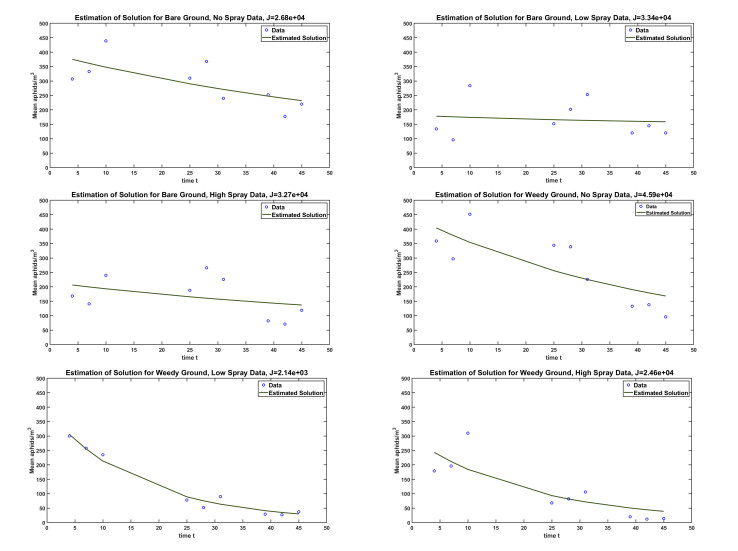









 DownLoad:
DownLoad:
